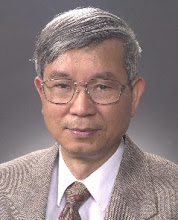Taiwanese US National Passport Lawsuit
National Press Club, Library Lounge529 14th St, NW, Washington , DC 20045
February 5, 2009 Thursday afternoon, 1:00 - 3:00 pm follows the Oral Arguments in US Court of Appeals
Latest Developments
Oral Arguments scheduled in Taiwanese Civil Rights case, Taiwanese persons applying for US National Passports with Professor Cheng Chung-mo as Representative
Feb. 5, 2009, Thursday, 9:30 am
US Court of Appeals, 333 Constitution Ave., NW ,Washington, D.C. 20001
Background Information
1. The decision in Rogers v. Sheng (D.C. Circuit, 1960) in accompaniment with the Congressional Research Service's Report to Congress of July 2007 clearly shows that the US government has never recognized "Chinese sovereignty" over Taiwan . John J. Tkacik, Jr., Senior Research Fellow, Asian Studies Center , The Heritage Foundation, also wrote an article about this in March 2008, concluding that: "For more than six decades, the United States has explicitly declined to recognize "Chinese" sovereignty over Taiwan , even under the 'Republic of China.' ".
2. The statement by many researchers that " Taiwan is Chinese territory and its incorporation is unfinished business from the civil war of the late 1940s," is in error. More correctly, Taiwan is a piece of unfinished legal business left over from WWII in the Pacific Theater.
3. Taiwan had been ceded to Japan by Shimonoseki Treaty in 1895. After Pearl Harbor (Dec. 7, 1941), all military attacks against the four main Japanese islands and (Japanese) Taiwan were conducted by US military forces. Under the internationally recognized laws of war, the United States shall be the "principal occupying power" of these areas.
4. In the San Francisco Peace Treaty (SFPT) of 1952, Japan renounced all right, title and claim to Taiwan in Article 2(b), but no "receiving country" was specified. However, what 99.9% of civilian researchers fail to consider is that Article 23(a) of the treaty designates (and confirms) the position of the United States of America as the "principal occupying power" of all areas under the geographic scope of the treaty. Furthermore, the scope of application of this designation is given in Article 4(b), stating that a US federal agency called the "United States Military Government" (USMG) has final disposition of all Article 2 and Article 3 territories.
5. The situation regarding "the final disposition of the SFPT Article 3 territories" provides a perfect parallel for Taiwan . According to the treaty specifications, both the Article 3 territories ("Ryukyus") and the Article 2(b) territories (" Taiwan ") are under the jurisdiction of USMG as per the specifications of Article 4(b). The relevant rule is that "Military government continues till legally supplanted." Accordingly, the end of USMG jurisdiction over the Ryukyu island group was announced by the US Commander in Chief (Mr. Nixon) to be effective as of May 15, 1972. Japanese civil government supplanted USMG jurisdiction. Contrastingly, there has been no similar announcement concerning Taiwan , regarding any recognized "civil government" being formed or operating in Taiwan at any time since 1952. Hence, it is easily seen that Taiwan has remained under the jurisdiction of the USMG up to the present day. 6. On Aug. 30, 2007, Mr. Dennis Wilder, National Security Council Senior Director for Asian Affairs, stated that: " Taiwan , or the Republic of China, is not at this point a state in the international community. The position of the United States government is that the ROC -- Republic of China -- is an issue undecided, and it has been left undecided, as you know, for many, many years."
7. NSC Senior Director Wilder's comments are accurate, and fully correspond to the legal reality that as a territory under the jurisdiction of "occupying power(s)," Taiwan has not yet reached a final political status.
8. Specifically, Taiwan territory is currently under the jurisdiction of the United States of America – the principal occupying power of the Senate ratified San Francisco Peace Treaty. The Republic of China is (1) a subordinate occupying power, beginning Oct. 25, 1945, and (2) a government in exile, beginning mid-December 1949. In other words, the ROC is serving as the "agent" for the United States in the military occupation of Taiwan . There has been no change in this status from WWII to the present.
9. The Republic of China on Taiwan is not a sovereign nation, and the native Taiwanese people, who currently hold ROC passports and other identification documents, are essentially stateless. This fact was confirmed in a March 18, 2008 decision of the US District Court for the District of Columbia , in the case of Roger C. S. Lin et. al. v. United States of America . This case is now proceeding in the US Court of Appeals.
10. The "One China Policy" as espoused by the United States Executive Branch is correct. The PRC is the sole legitimate government of China . Taiwan is an overseas territory under the jurisdiction of the military arm of the US government. Under international law, the ROC is conducting what is known as a "proxy occupation" of Taiwan . Oral arguments in Roger C. S. Lin et. al. v. United States of America is set for Feb. 5, 2009, at the US Court of Appeals, 333 Constitution Ave., NW , Washington D.C. at 9:30 am.
A Press Conference at the National Press Club will be held at 1:00 pm the same day. More information is available at -- http://www.taiwanba/ sic.com/insular/ lin.htm or by contacting Mr. Richard Hartzell at rgroup.tw@gmail. com Additional contacts are: Mr. Cheng-kuang Chen 408-561-7556 chengkuangchen@ yahoo.com San Jose, Calif. Mr. John Hsieh 510-432-7353 john@jckhsieh. com Hayward , Calif. .
Subscribe to:
Post Comments (Atom)

This is a very important lawsuit for Taiwan's future. See more details at http://www.civil-taiwan.org/usca.htm
ReplyDelete